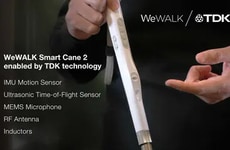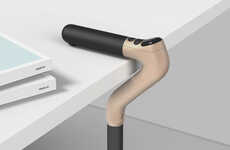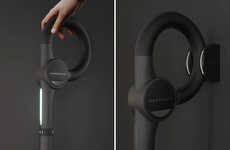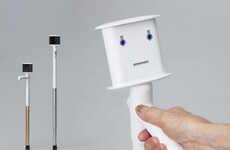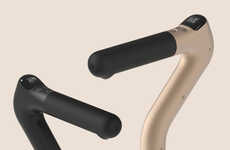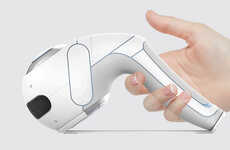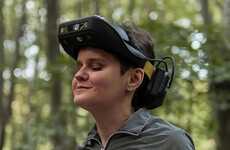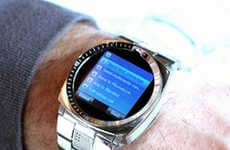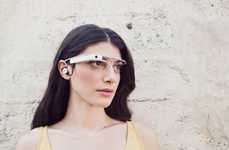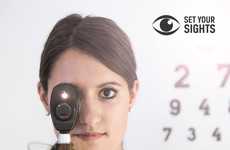
The Eye Stick by Kim Tae-Jin Uses Ultrasonic Sensors
Meghan Young — January 15, 2013 — Lifestyle
References: yankodesign
The Eye Stick does more than simply keep the visually impaired out of harm's way. It boasts some hi-tech touches to ensure that they can maneuver around public spaces as though they have some semblance of sight.
Designed by Kim Tae-Jin, the Eye Stick takes on a very sci-fi aesthetic. In fact, one may rightly liken it to a Lightsaber. Taking the form of a simple handle, the Eye Stick projects an LED light that alerts others of the user's presence.
More excitingly, however, is the Eye Stick's ultrasonic sensors, which help to determine distance to allow users to navigate their surroundings easier. They can also obtain information about products by automatically scanning barcodes through a camera. The information is then converted to voice through a Bluetooth connection.
Designed by Kim Tae-Jin, the Eye Stick takes on a very sci-fi aesthetic. In fact, one may rightly liken it to a Lightsaber. Taking the form of a simple handle, the Eye Stick projects an LED light that alerts others of the user's presence.
More excitingly, however, is the Eye Stick's ultrasonic sensors, which help to determine distance to allow users to navigate their surroundings easier. They can also obtain information about products by automatically scanning barcodes through a camera. The information is then converted to voice through a Bluetooth connection.
Trend Themes
1. Hi-tech Mobility Aids - There are opportunities for companies to innovate on mobility aids using ultrasonic sensors and Bluetooth technology.
2. Smart Assistive Devices - Smart assistive devices like the Eye Stick have the potential to improve the lives of people with disabilities.
3. Accessible Public Spaces - The use of ultrasonic sensors in mobility aids can create opportunities to make public spaces more accessible to people with disabilities.
Industry Implications
1. Assistive Technology - Companies that build assistive technology can explore the use of ultrasonic sensors and Bluetooth technology to improve mobility aids for people with disabilities.
2. Disability Services - Disability service providers can adopt smart assistive devices like the Eye Stick to improve the services they offer to their clients.
3. Retail - Retailers can improve accessibility for people with disabilities by adopting new technologies like the Eye Stick that can read barcodes and provide voice information about products.
2.2
Score
Popularity
Activity
Freshness

